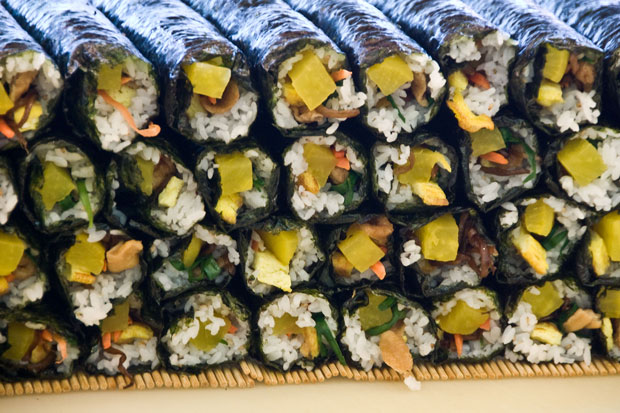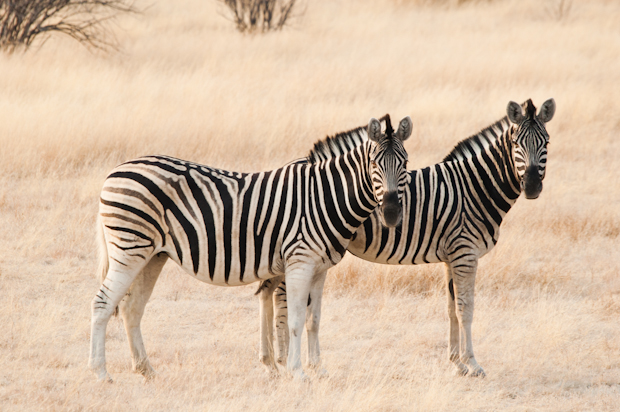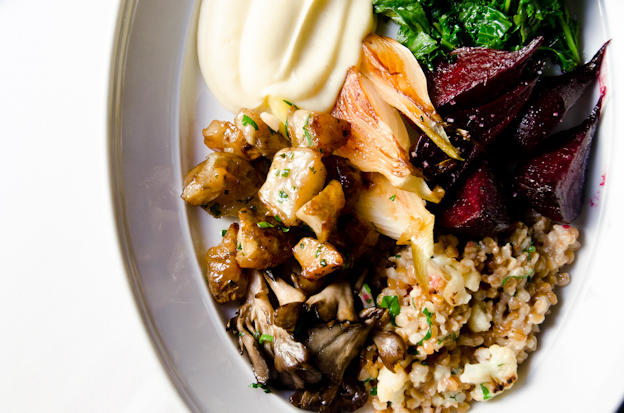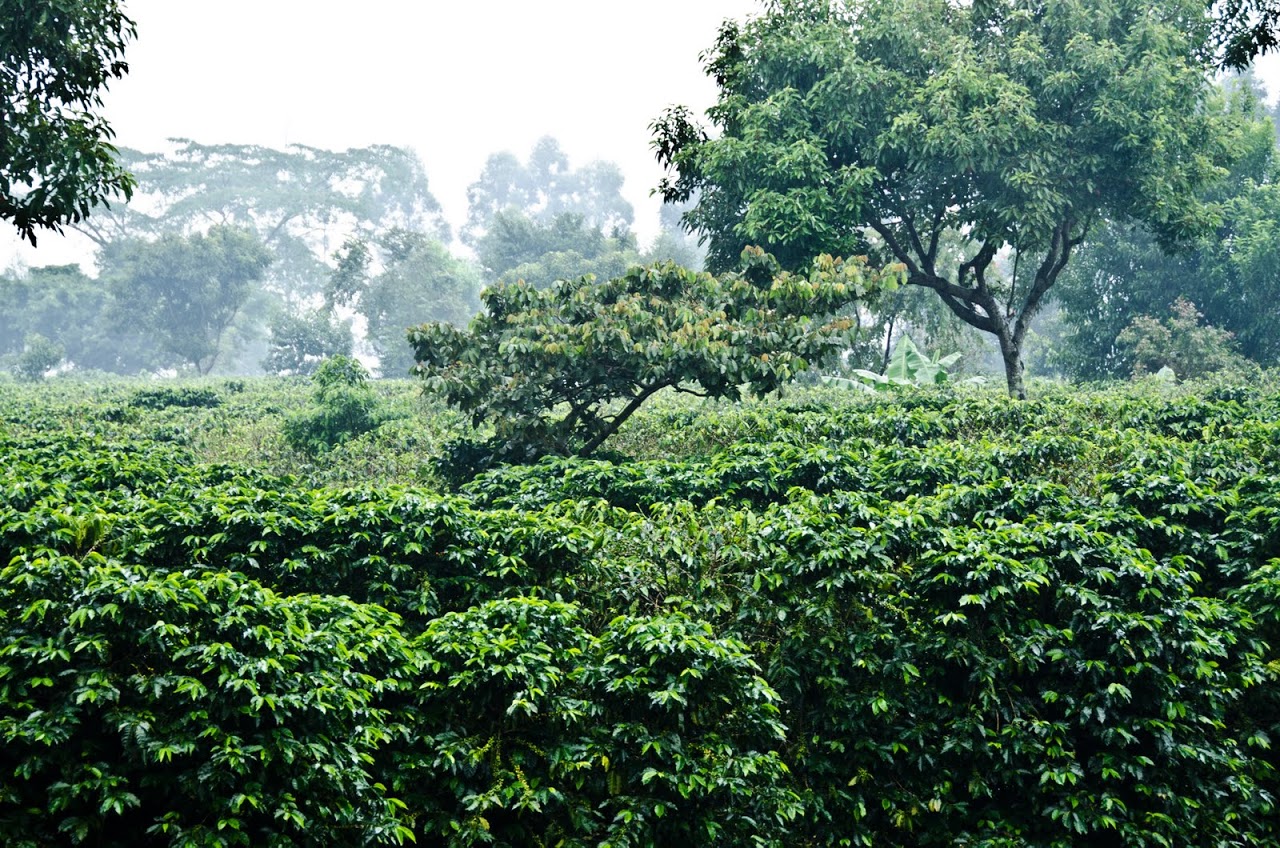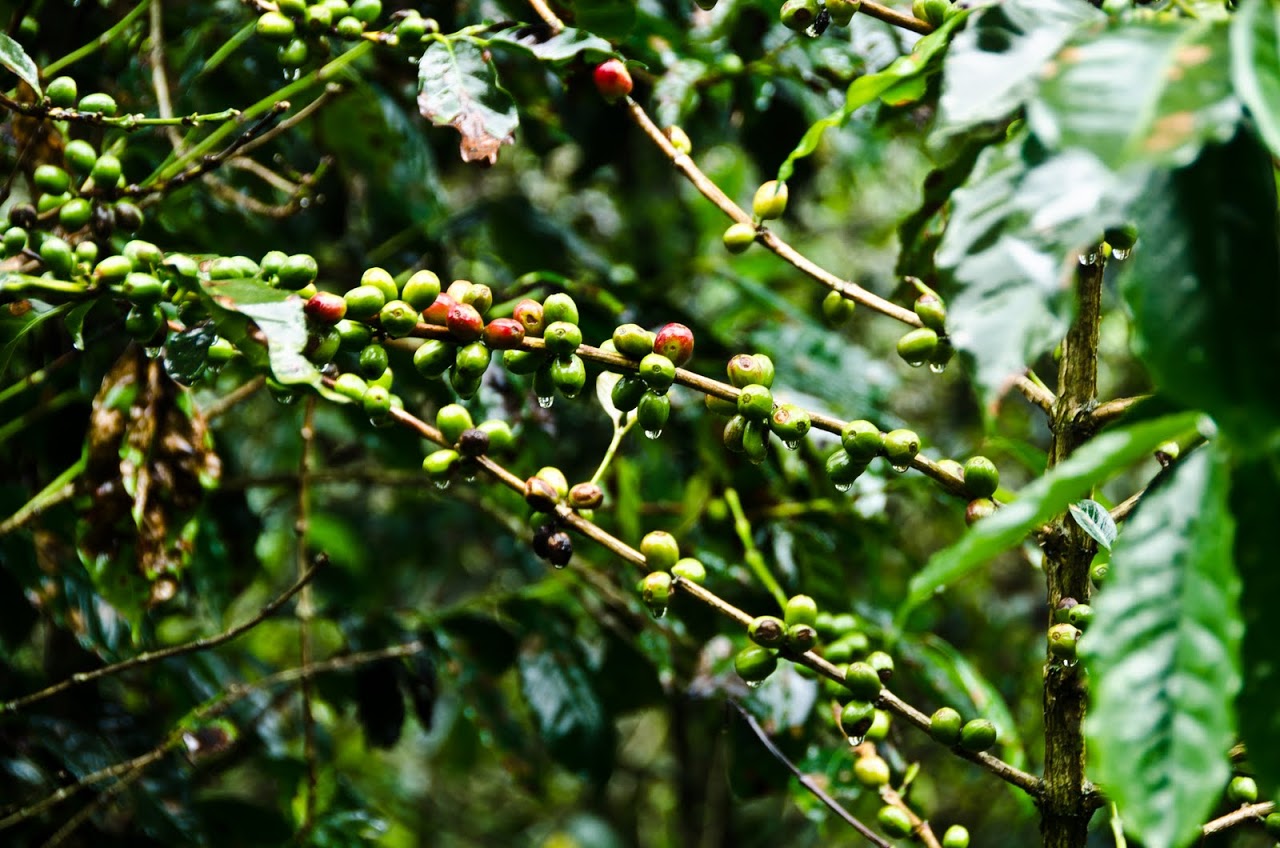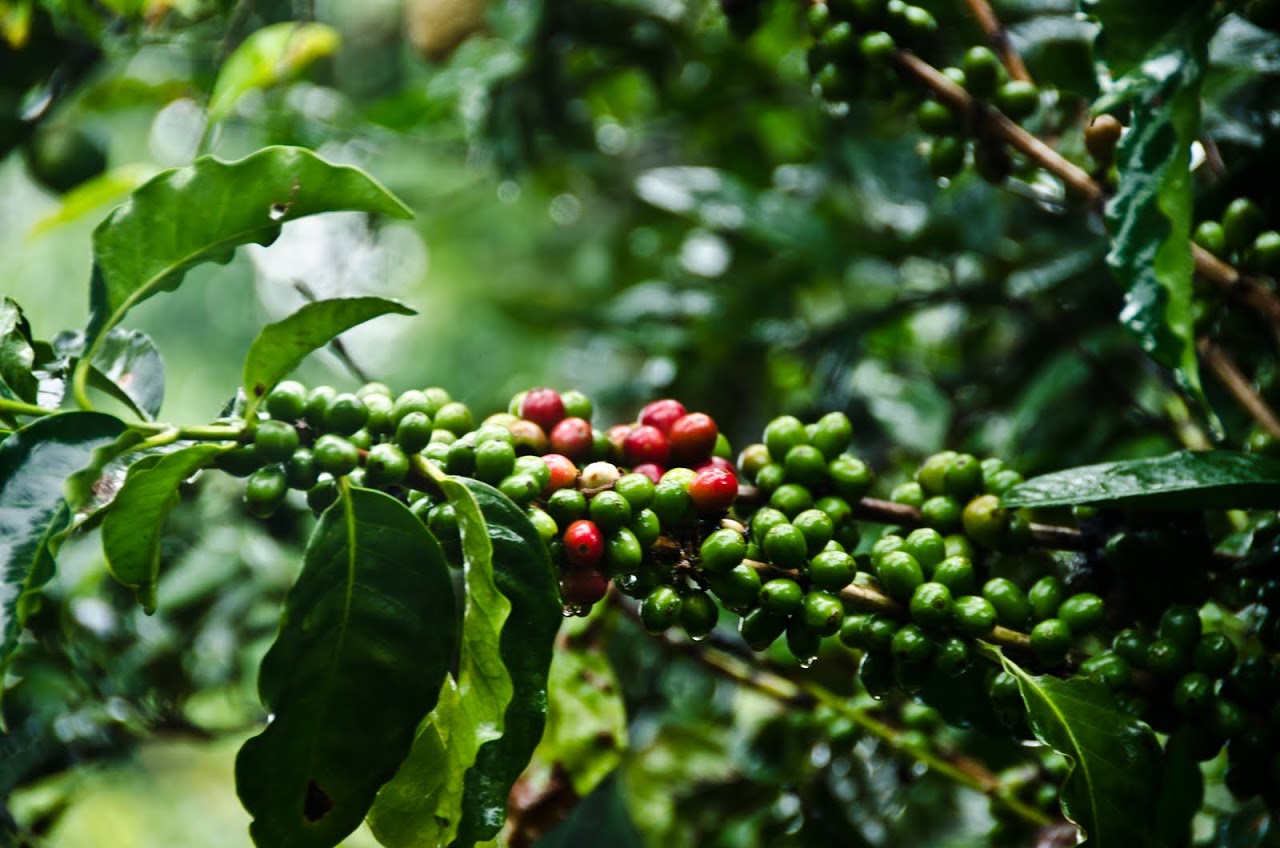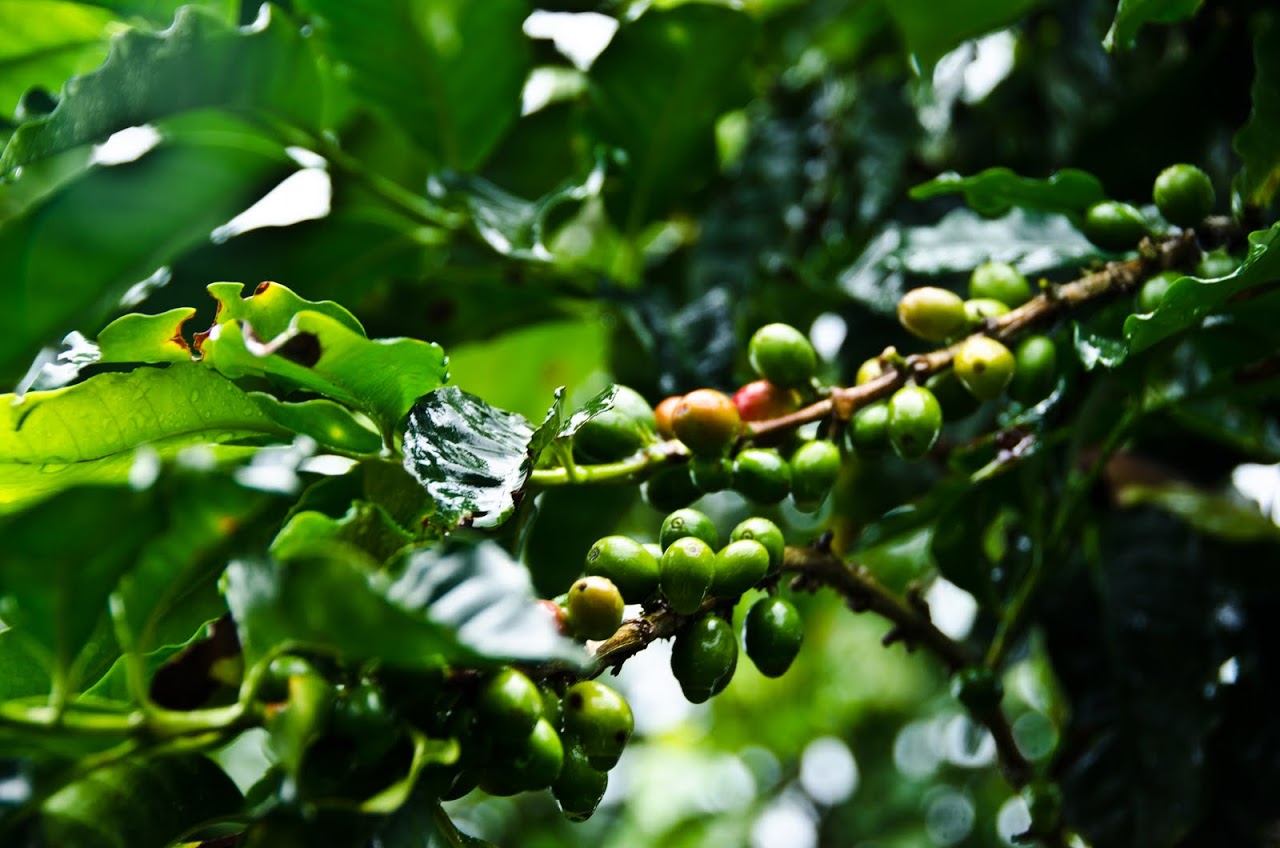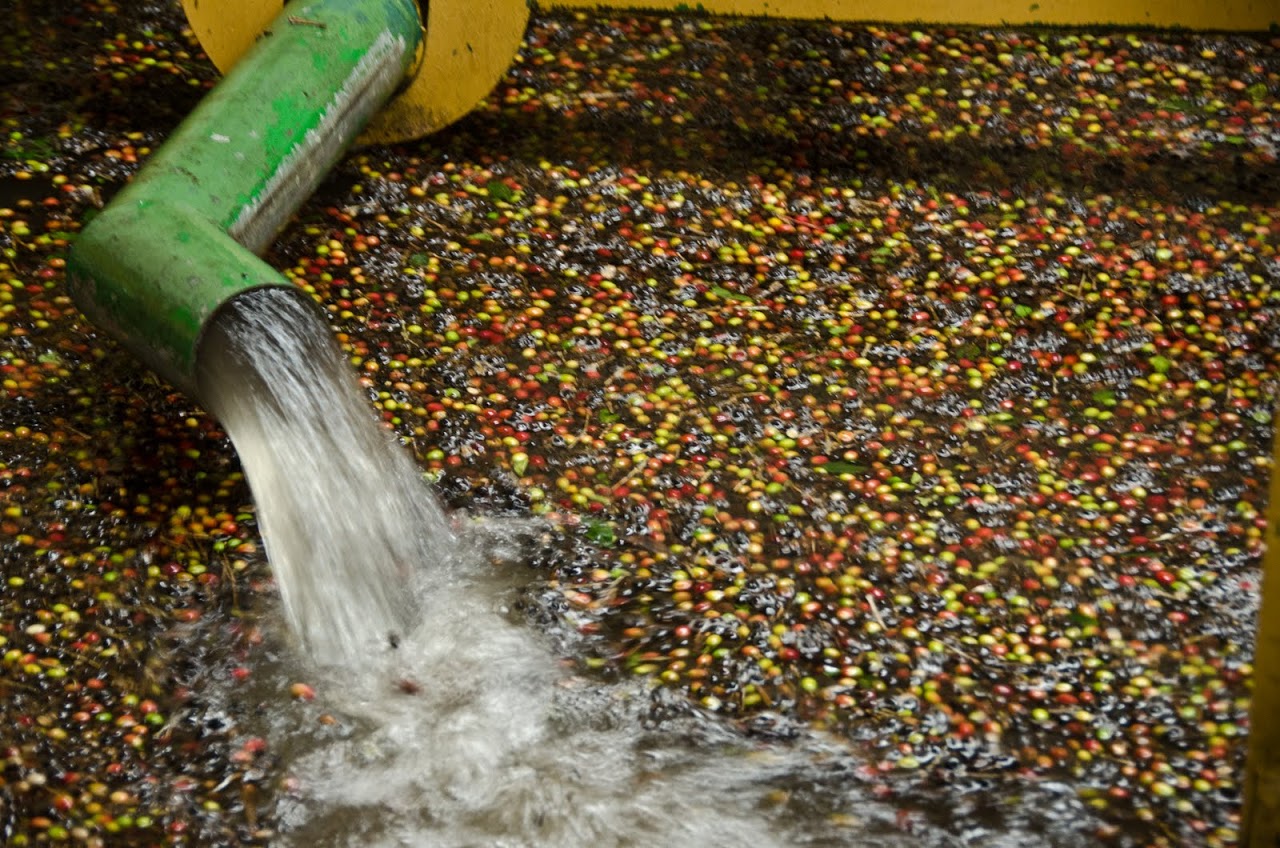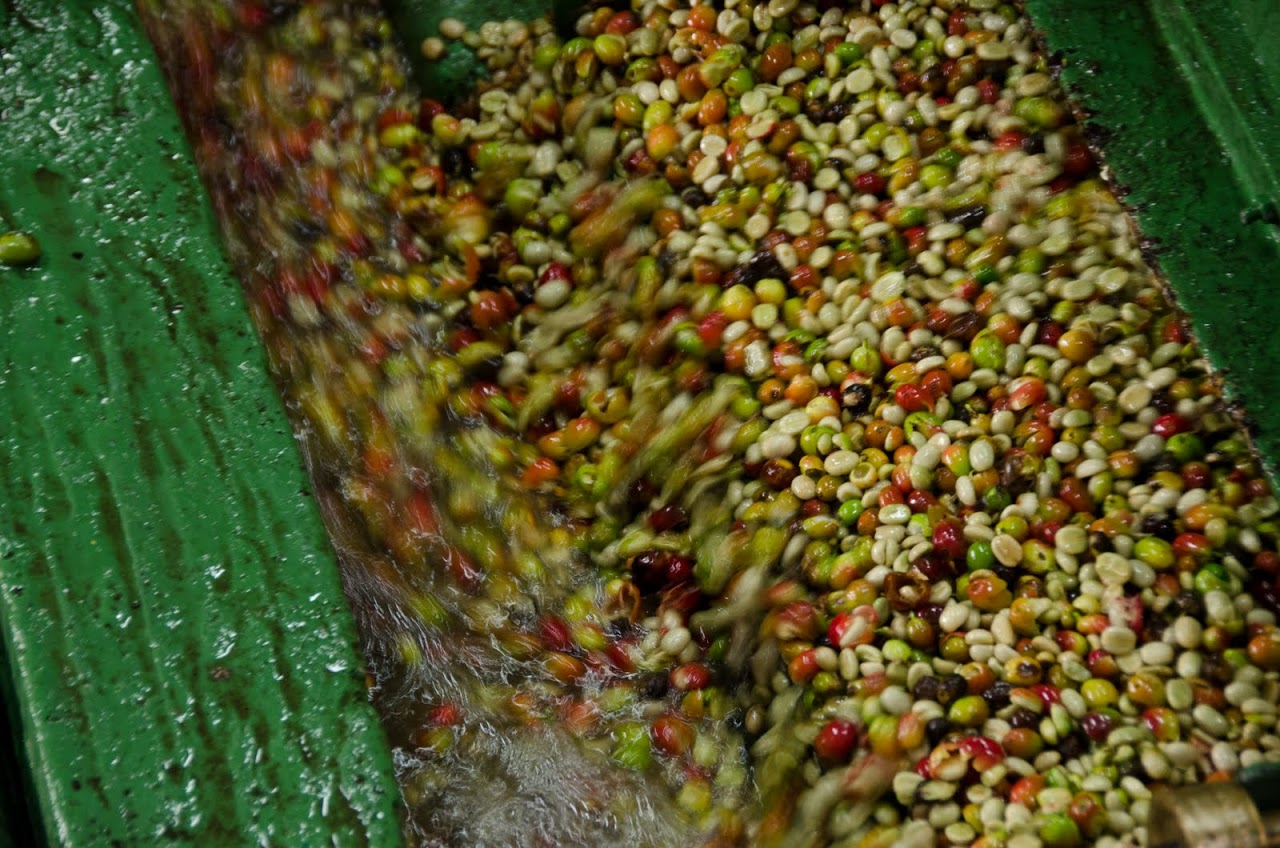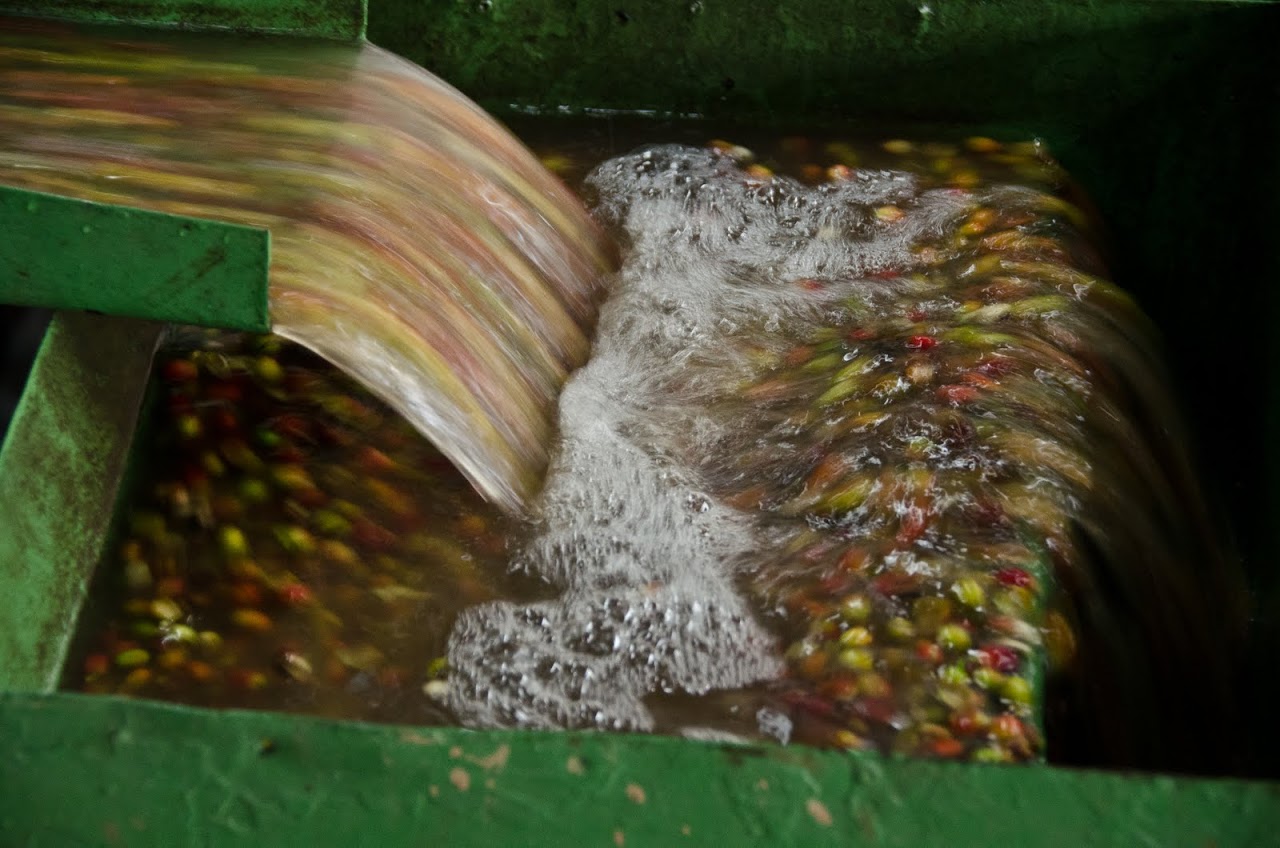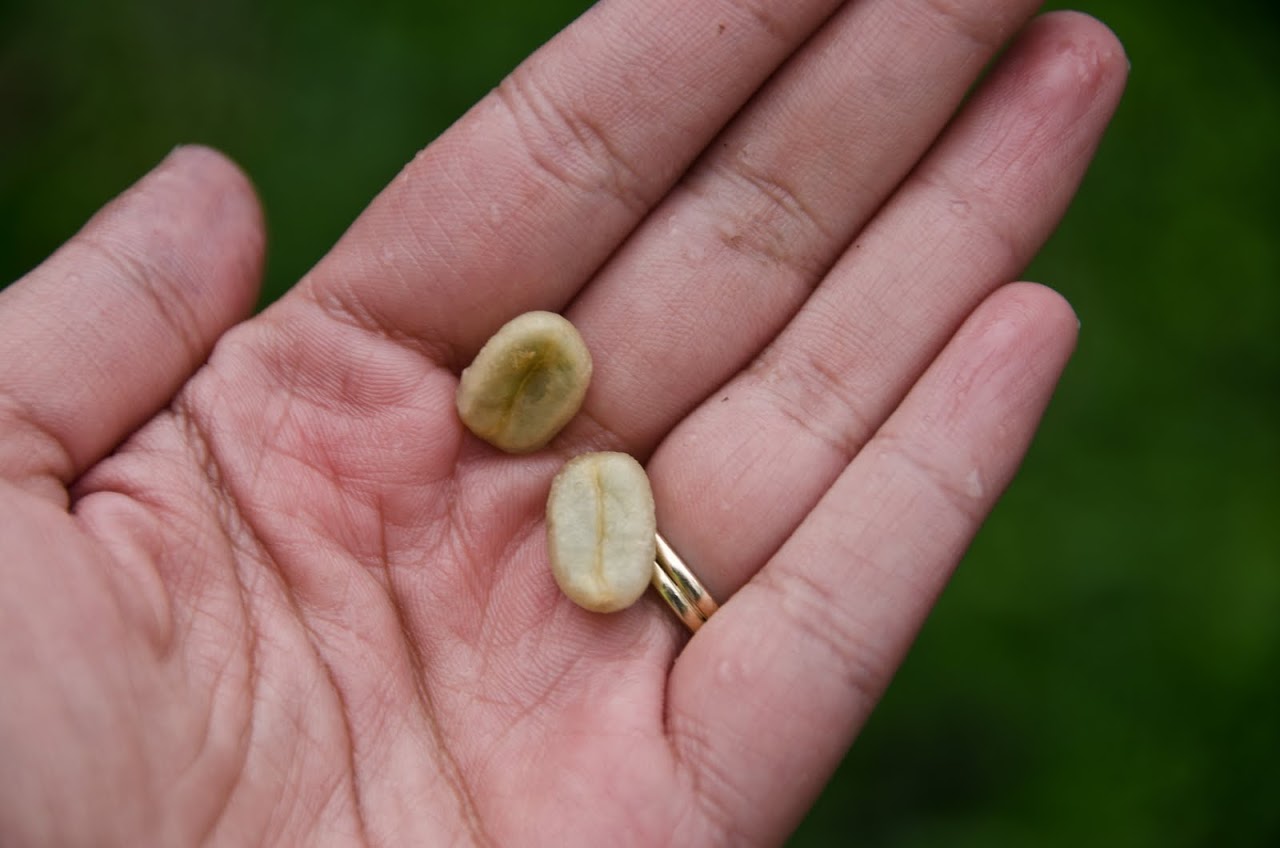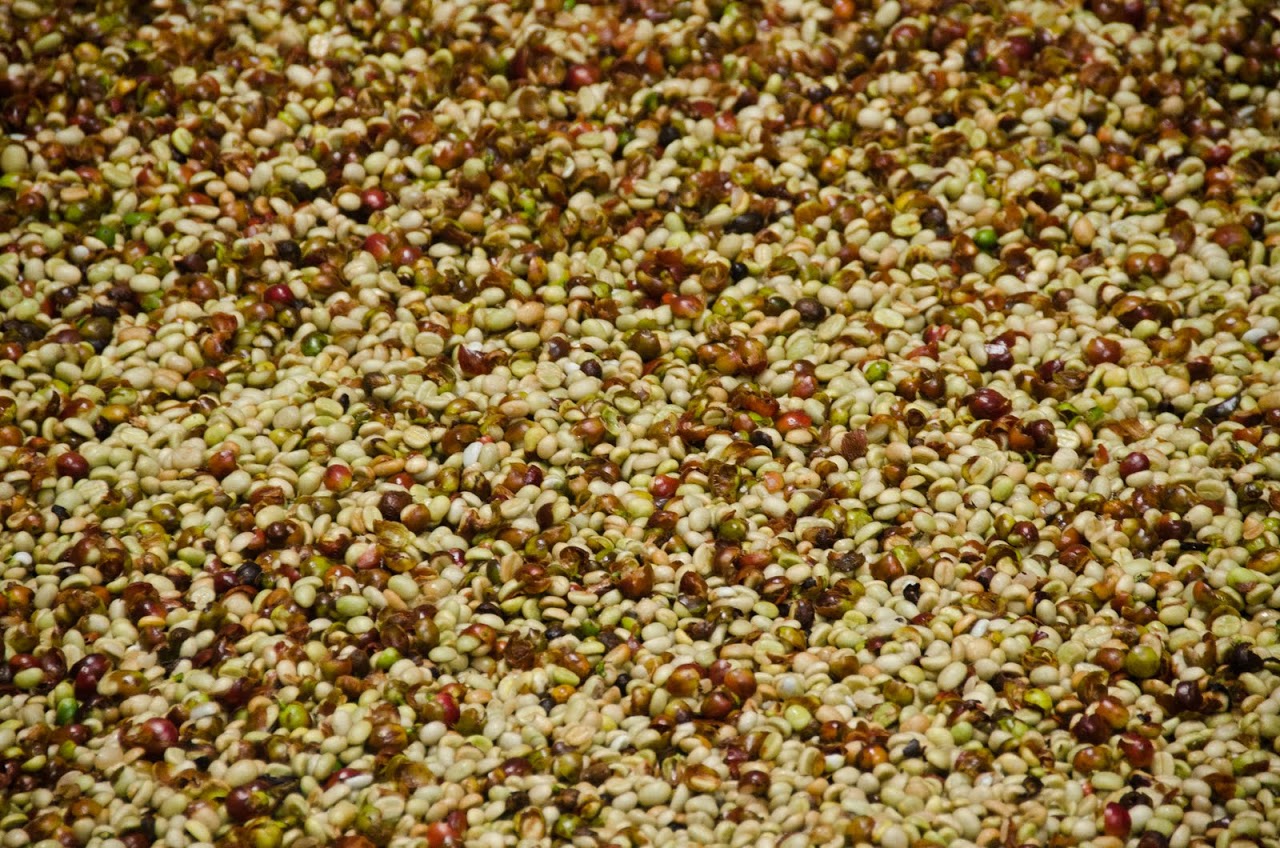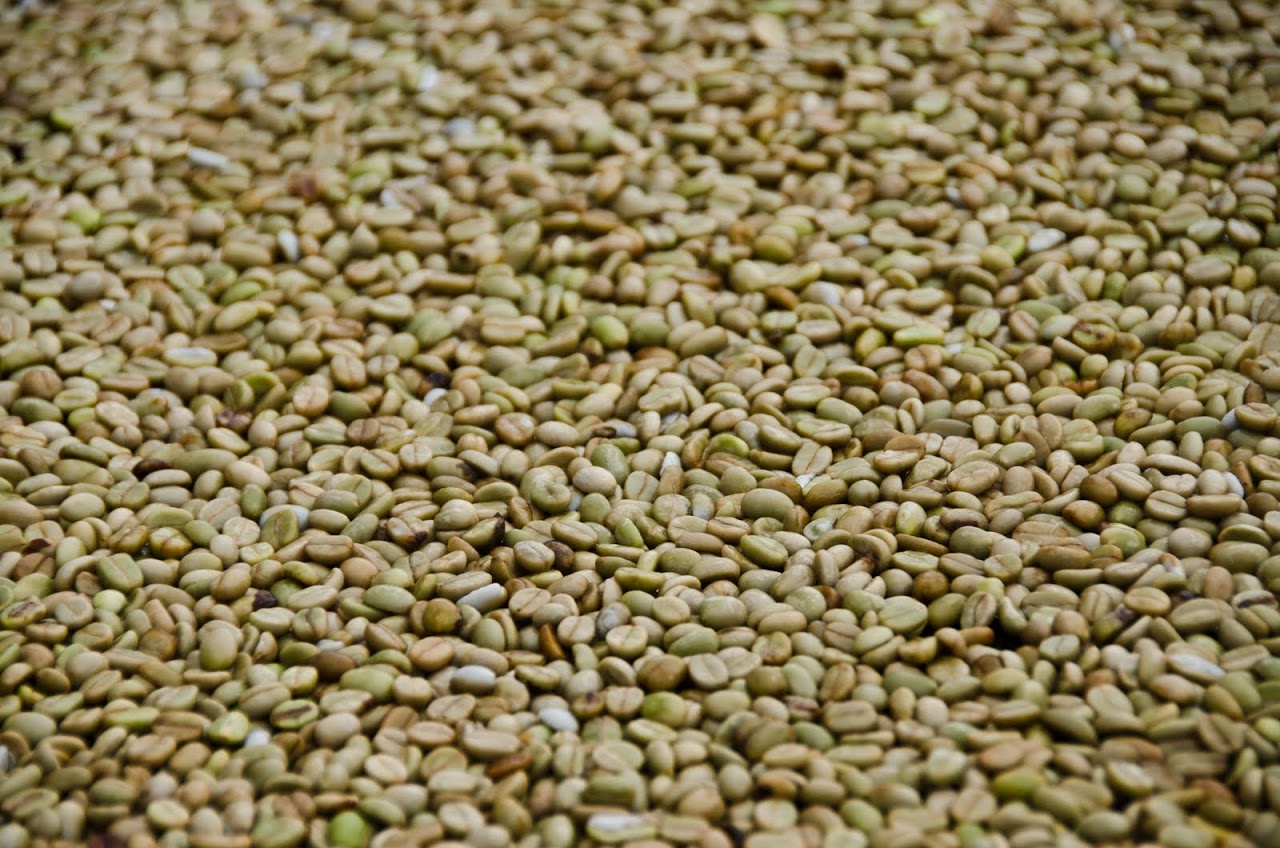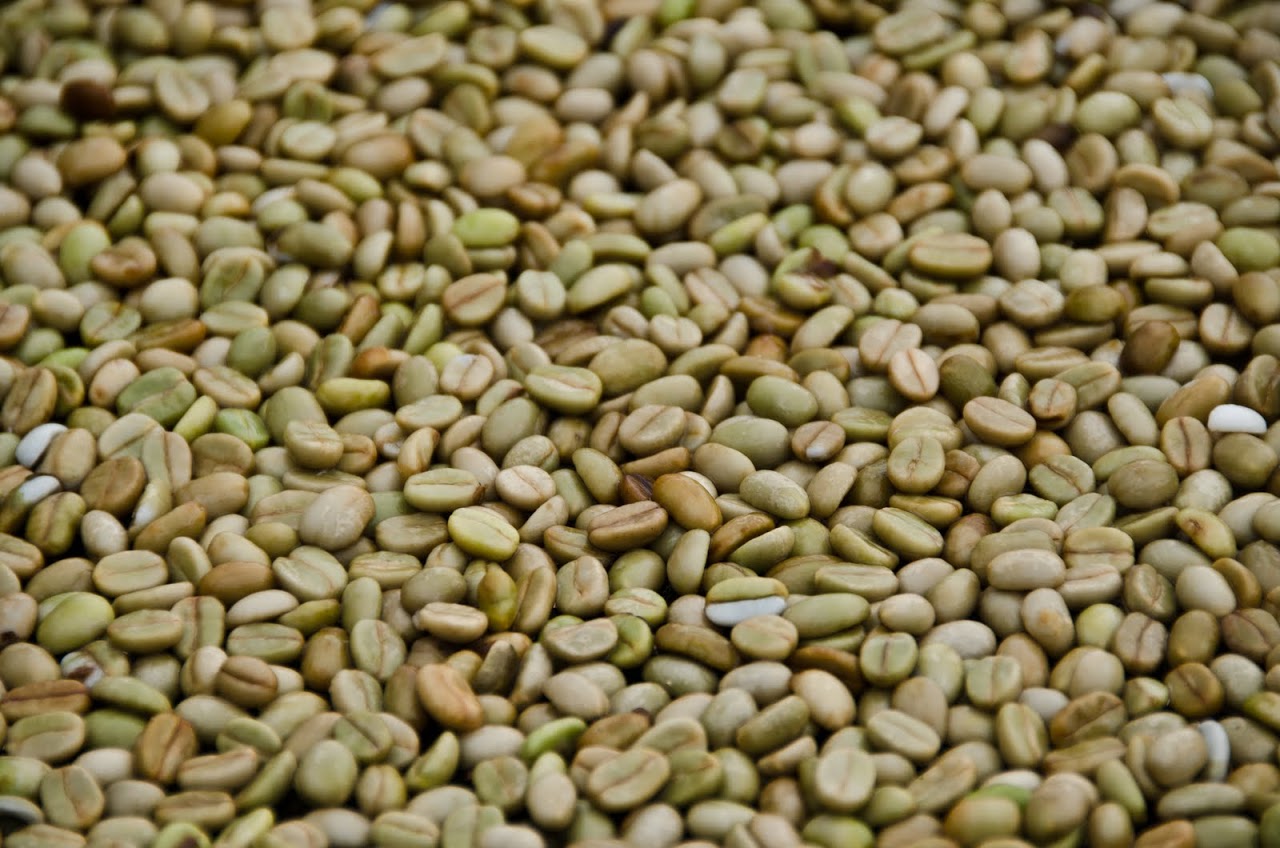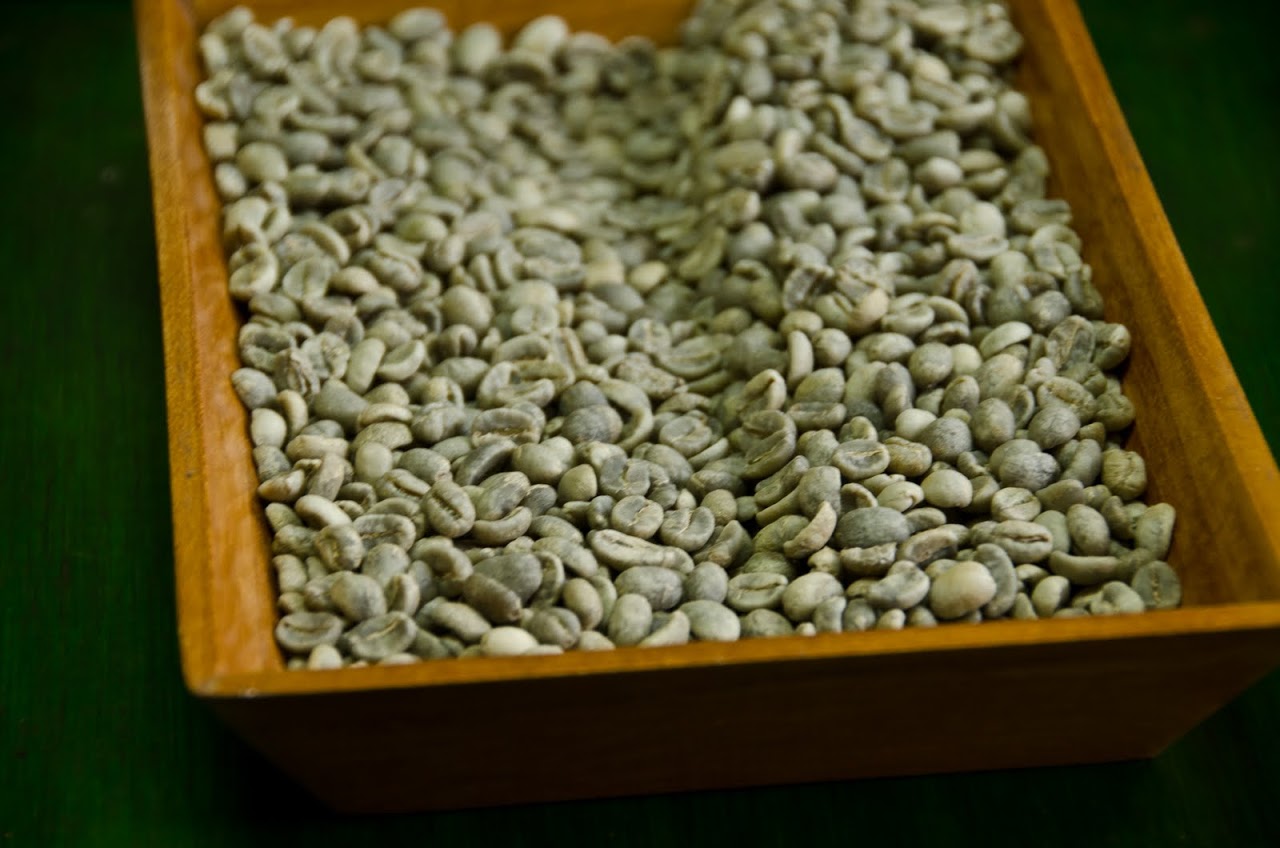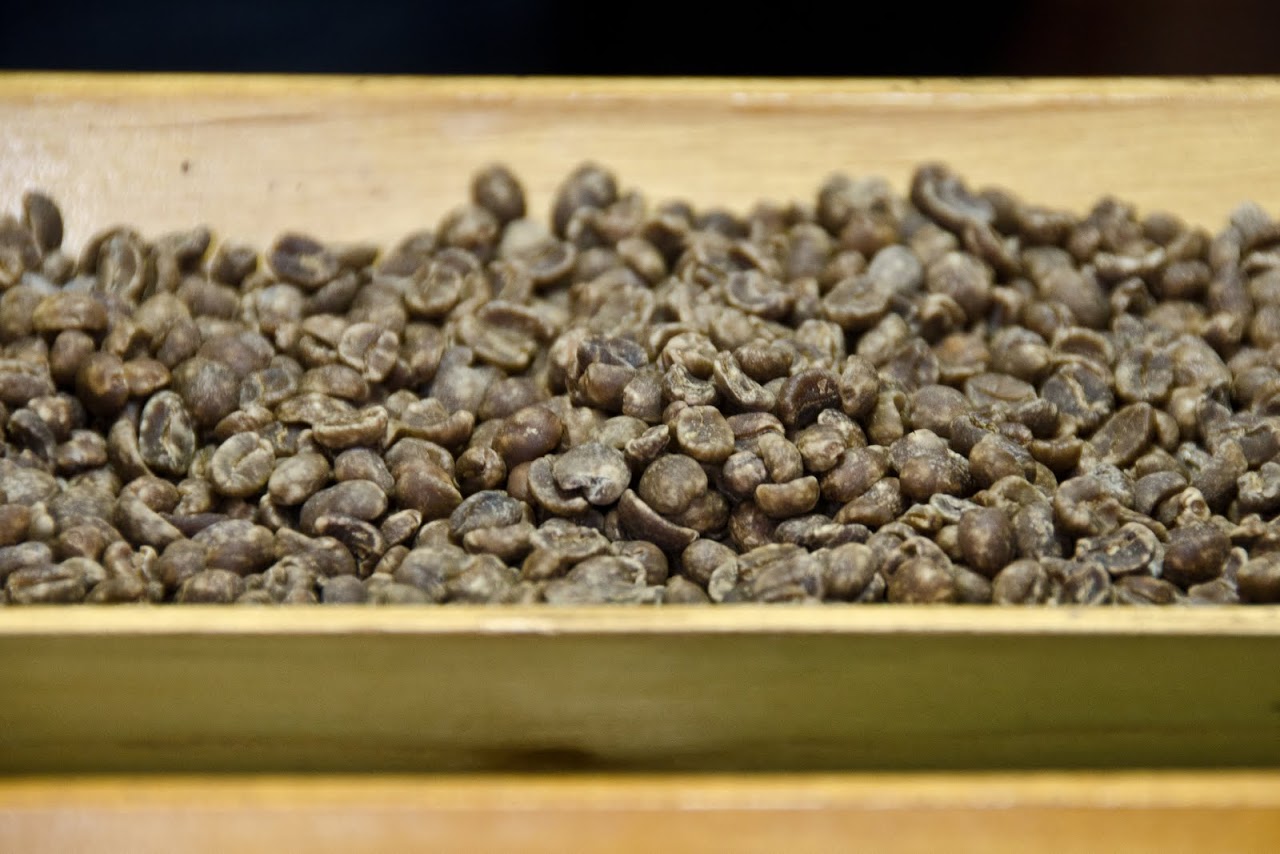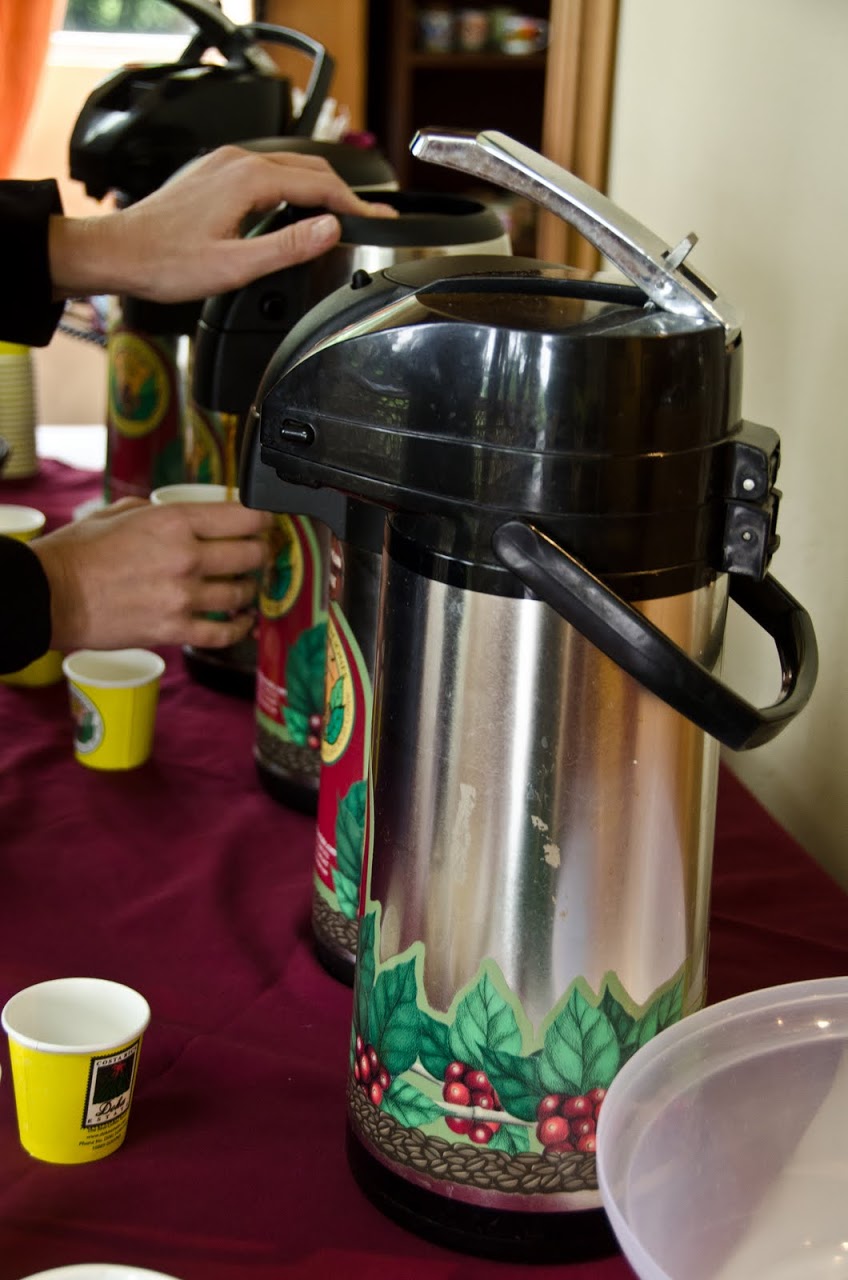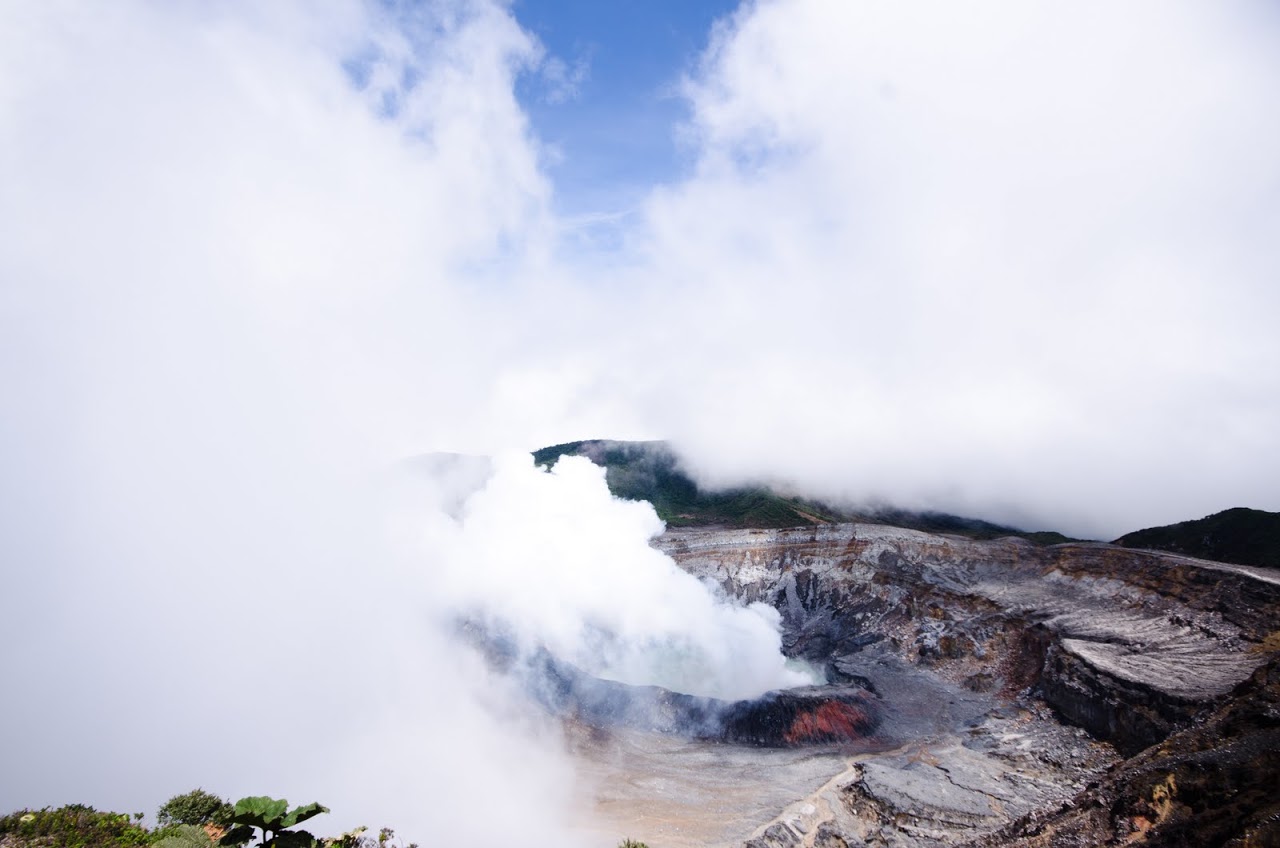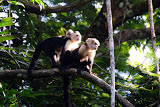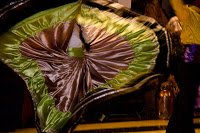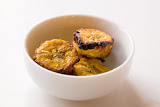Doka Coffee Plantation
Morning comes and we scoop ground brown-black powder into the coffee maker. Water boils and the thick aroma permeates the house. While we sip the liquid that starts our day, thousands of miles away, a worker at Doka Estate in the Alajuela province of Costa Rica works to bring that coffee to our table.
Coffee beans on the branch
Doka Estate is Costa Rica's largest coffee producer, with over 250 year-round employees and 32 farms. A whopping 65% of its production is sold to Starbucks and another 30% is sold to other major international buyers, including Caribou Coffee. Doka keeps the best 5% of its production for its own estate blend, as the highest premium quality coffee grown in Costa Rica.
Coffee beans on the branch
Coffee starts here on these little branches. When the berries ripen to a bright red, Doka's plantation harvesters come out and pick the berries. Mind you, no machines are used at Doka (or at any coffee plantation, for that matter) because the berries ripen at different times of the week/month and only the red ones should be collected for coffee production. The berries fully ripen between November to March, making those months the busiest for Doka's harvesters.
Close-up of coffee berries
The average field worker picks about 8 baskets, each filled to about 20 pounds, per day in the high season, and will make anywhere from $0.75 to $2.00 USD for each basket. Doka is Fair Trade certified because though these wages may seem low by American standards, Doka supplements the workers' income with free housing, schooling, and health insurance.
Coffee berries in tank
The berries must be peeled within 15 days of picking. First, they are dumped into huge vats of water which rinse and soak the berries.
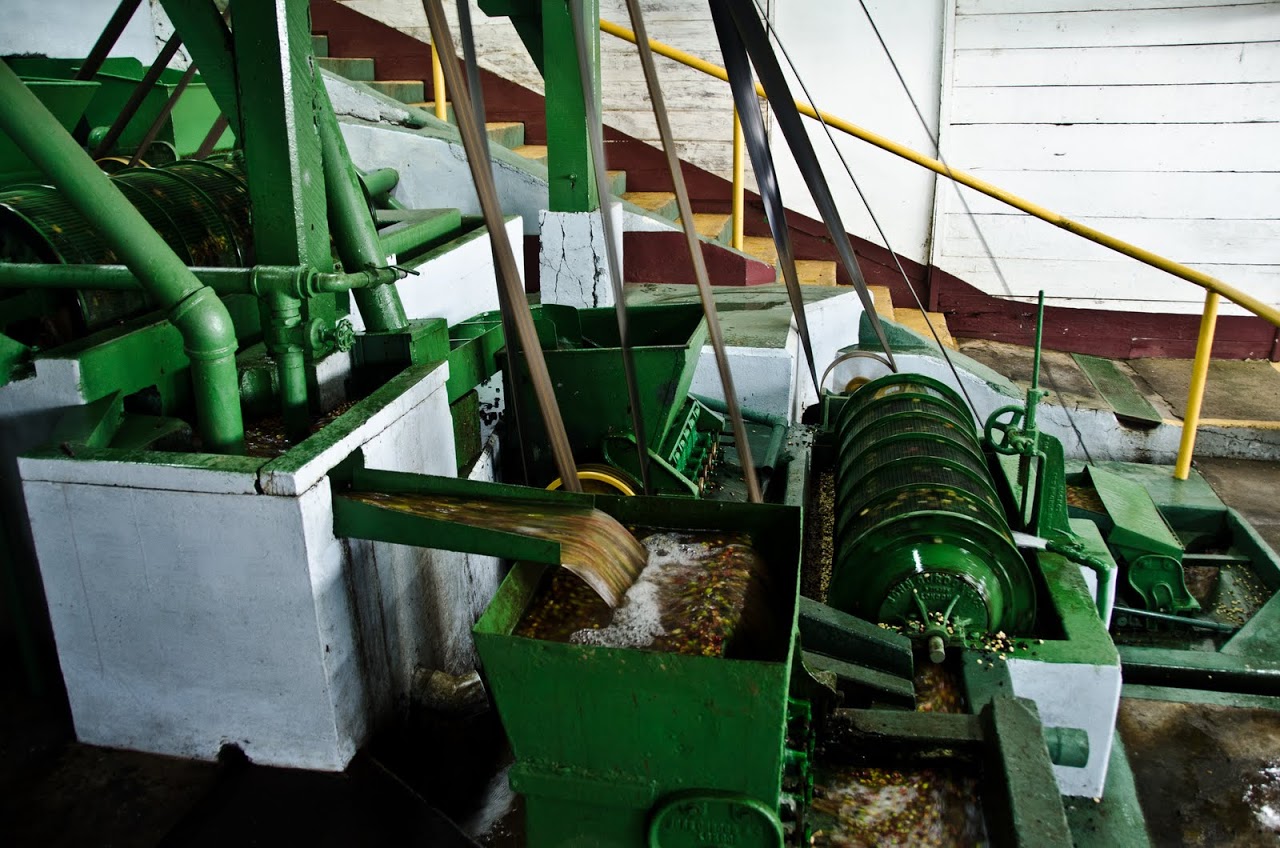
|
Coffee berries in peeling machine
The berries run from the vats to a peeling machine which pushes the peels off the berries using hydraulic pressure.
Two beans/seeds inside a peeled berry
When the berries are peeled and the pulp is removed, the seed looks like this. Recognize that? Yep, the coffee beans we grind are actually the seeds of the coffee berry. Most coffee berries have two coffee beans/seeds within but certain berries will only have one bean/seed, which are called peaberries. Peaberries have a stronger flavor and are prized as premium coffee blends.
. Peeled berries fermenting
After the pulp and skin are removed, the peeled beans/seeds ferment in water for approximately 34 hours.
Dried beans
The beans are laid in the sun to dry for around four days . . . or, if it's the rainy season, they can dry the beans in a centrifugal dryer in about four hours. Premium quality coffee must be dried outside. The beans are fully dried when they turn gray-blue or contain about 10-11% moisture. By the time the coffee beans reach this point, they have lost about 80% of the volume they had as berries.
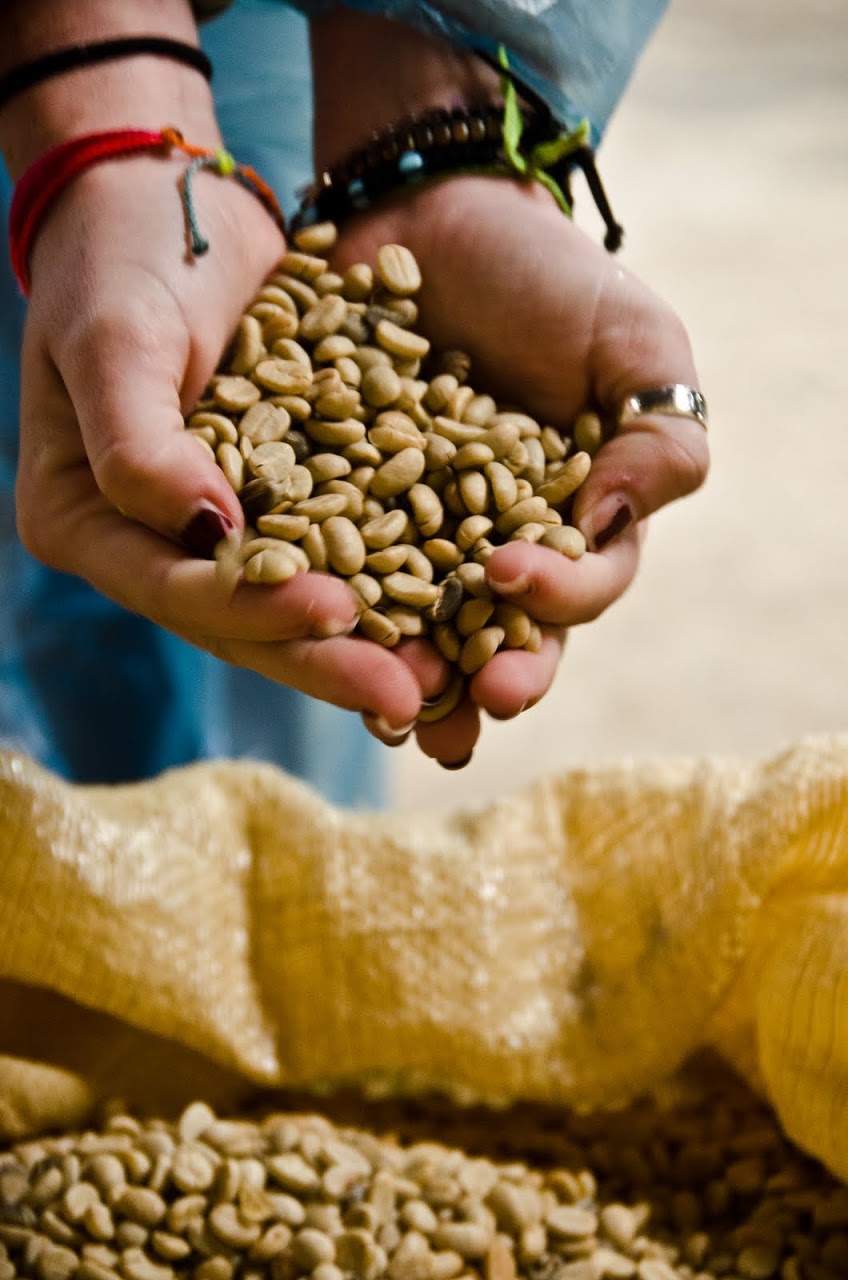
|
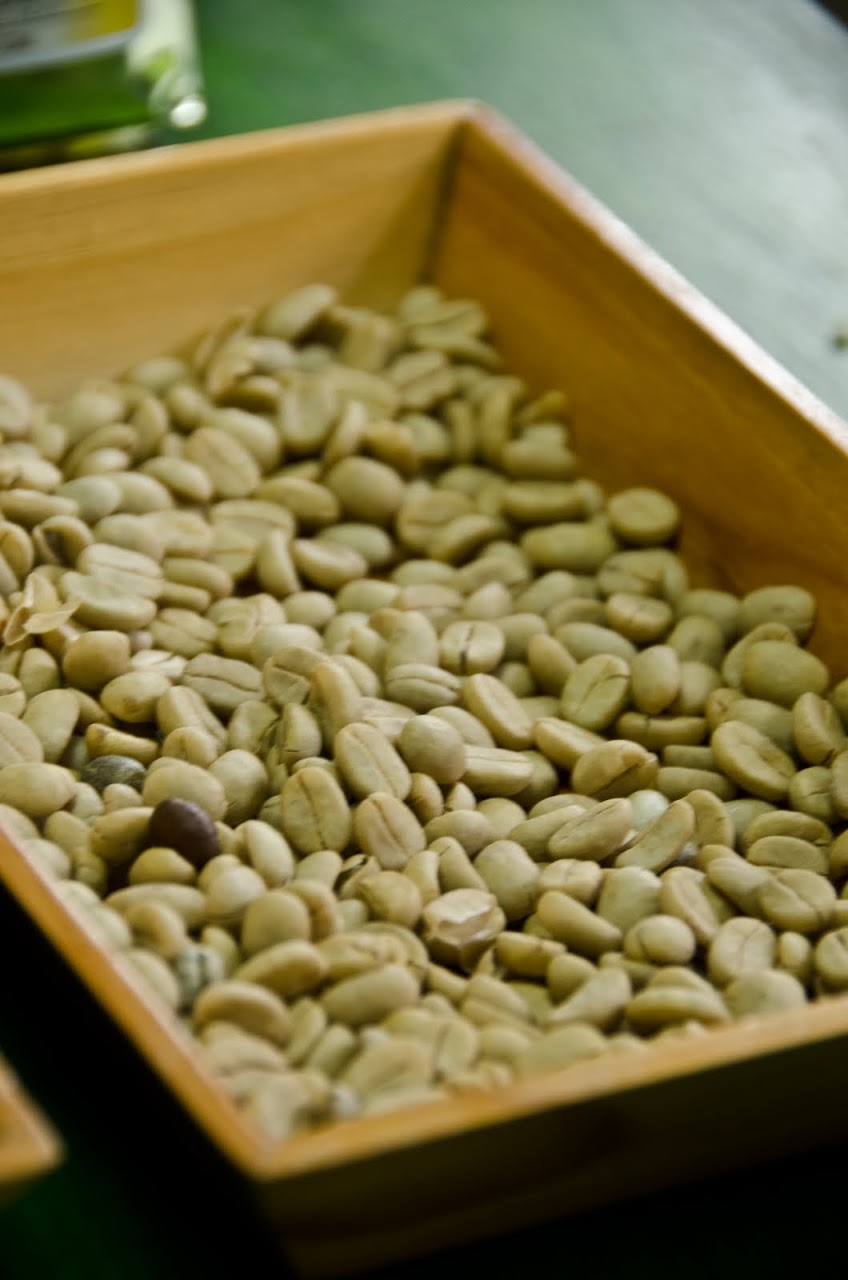
|
Dried beans in sacks
At this point, Doka can store the dried beans for two to four years, without the coffee losing any flavor.
Peaberries ready to be roasted
Once ready to be sold, the dried coffee beans are put into a pressurized air chamber which separates the pergamino - or first skin - from the exterior of the bean, leaving a blue-skinned seed beneath. Doka exports much of its coffee at this point so that individual coffee-sellers can roast the beans to their own preference. Doka also sends some of its beans to a special German processing plant which removes the caffeine from the bean to create decaffeinated coffee; Doka sells the remnant caffeine to Coca-Cola for its soda production.
Roasted coffee
The bean without its pergamino will last for one year without losing quality or flavor. Once the coffee is roasted, the pelicula , a thinner second skin falls off. Doka roasts its own coffee to different levels, depending on the flavors it wishes to sell. To get a medium roast coffee, for example, the beans will sit in the roasters for about 10 to 20 minutes, depending upon external humidity and temperature.
Once the coffee is roasted, the experts at Doka recommended that you seal the cofffee beans in a plastic airtight container and store it in your freezer for no longer than one year.
Doka Estate coffee tasting
At the end of our tour, I stared at my small cup filled with strong, bitter liquid, and sipped. Richness caught the back of my throat and I smelled nuts and underlying citrus, unsurprising since I saw orange trees lining the edges of the coffee plantations. I drank slowly and marvelled: such a small yet wonderful thing to be created from months of labor. A cup of coffee shall never be "just" a cup of coffee again.
Details
Poas Volcano
If you have any interest in coffee, agriculture, or how things get to your table, I highly recommend Doka Estate's coffee tour. Located within twenty minutes of active Poas Volcano and about two hours from San Jose, Doka has built an interesting and educational tour that makes for the perfect daytrip from Costa Rica's capital.




